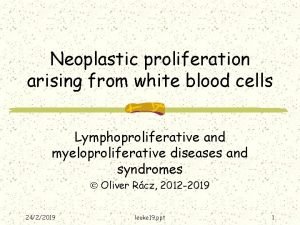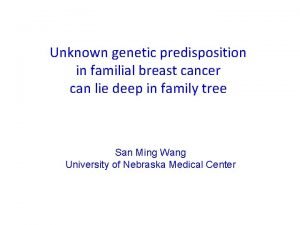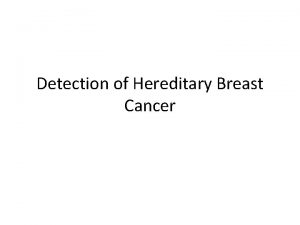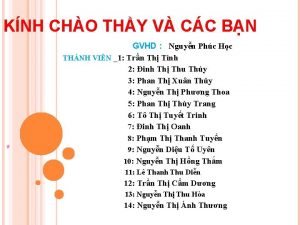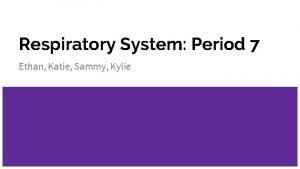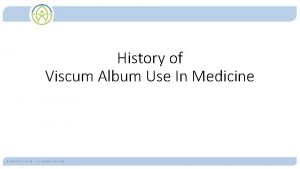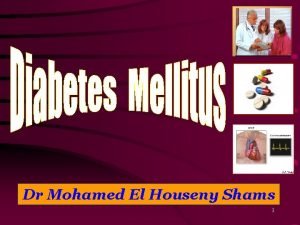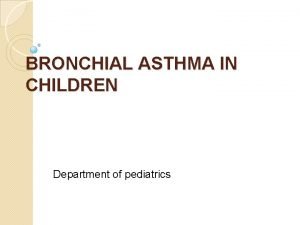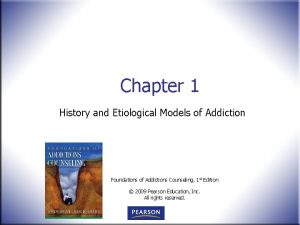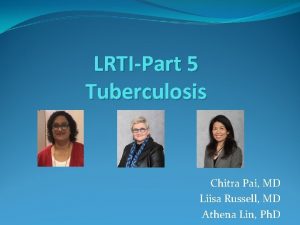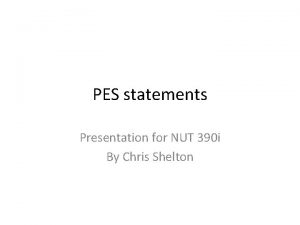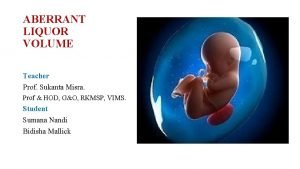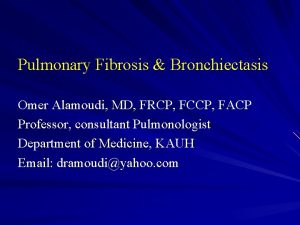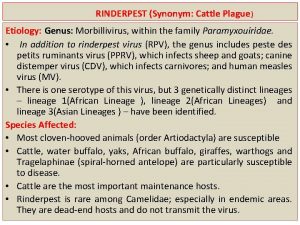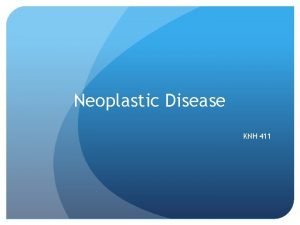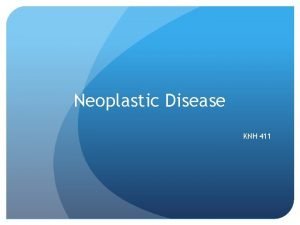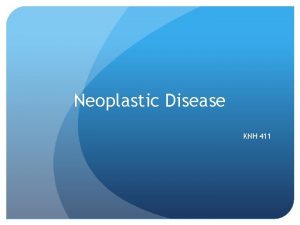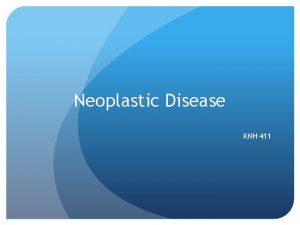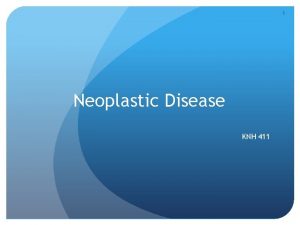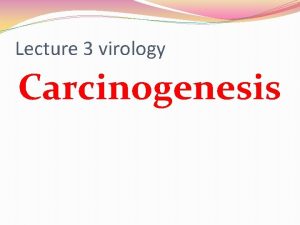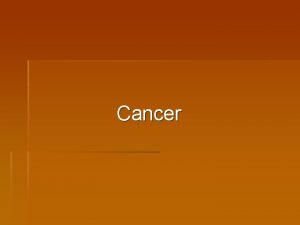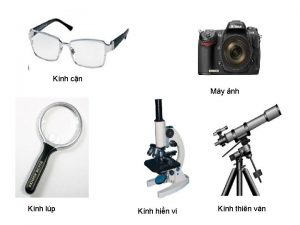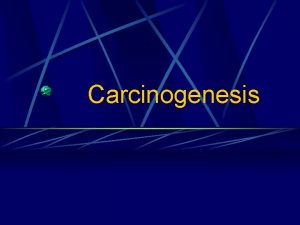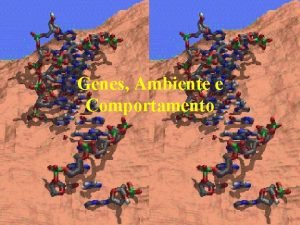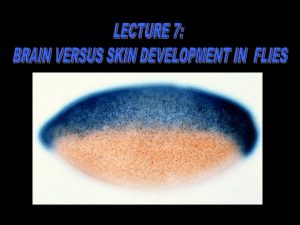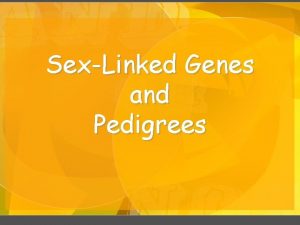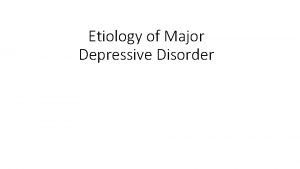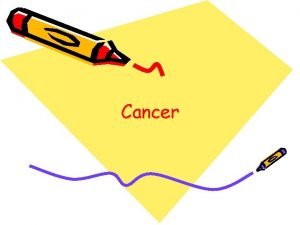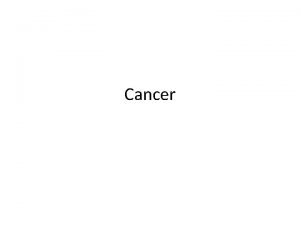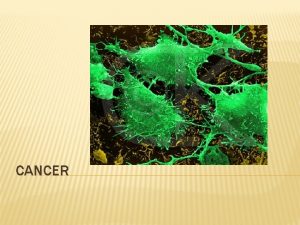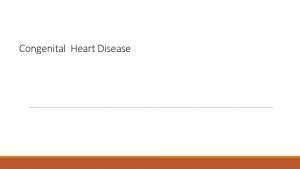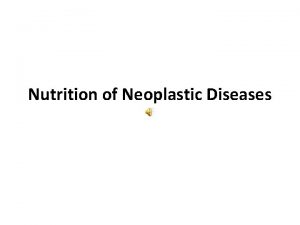Neoplastic Disease KNH 411 Cancer Carcinogenesis Etiology Genes



























- Slides: 27

Neoplastic Disease KNH 411

Cancer Carcinogenesis - Etiology Genes may be affected by antioxidants, soy, protein, fat, kcal, alcohol Nutritional genomics – study of genetic variations that cause different phenotypic responses to diet


© 2007 Thomson - Wadsworth

Chemotherapy Common side effects due to toxicity to rapidly dividing cells: Neutropenia Thrombocytopenia Anemia Diarrhea Mucositis Alopecia Cardiotoxicity, neurotoxicity, nephrotoxicity

Radiation Side effects: Delayed wound healing Fatigue, mucositis, dysguesia, xerostomia, dysphagia, odynophagia, severe esophagitis, dehydration Radiation enteritis, fistulas, strictures, chronic malabsorption, severe diarrhea TPN may be warranted to prevent weight loss

Nutrition Therapy Prevent malnutrition Screening and assessment important Be aware of cancer dg and treatments most likely to cause malnutrition

Nutrition Implications Cachexia – Metabolic alterations Tumor induces hypermetabolic catabolic state through chemical mediators Tumor specific “cachectic factors” Weight loss, anorexia, muscle wasting, fatigue, early satiety Standard therapy – nutrition support

© 2007 Thomson - Wadsworth

Nutrition Implications Abnormalities in CHO, lipid, protein metabolism Normal physiologic conservation seen in starvation does not occur CHO – insulin resistance, increased glucose synthesis, gluconeogenesis, increased Cori cycle activity, decreased glucose tolerance and turnover

Nutrition Implications Abnormalities in CHO, lipid, protein metabolism Protein - amino acids not spared, depletion of lean body mass, increased protein catabolism, or decreased protein synthesis Lipid – increased lipid metabolism, decreased lipogenesis, decreased LPL, presence of lipid-mobilizing factor (LMF)

Nutrition Implications Cancer treatment Nausea, vomiting Early satiety Dysgeusia Diarrhea Mucositis Xerostomia Constipation Weight loss Anemia

Nutrition Interventions Nutrition Assessment SGA Anthropometrics including height, weight, detailed weight hx, fluid retention, body composition Biochemical including serum hepatic proteins Clinical signs and symptoms

Nutrition Interventions Nutrition Assessment Detailed diet hx and current intake Foods tolerated, special diets, use of CAM, supplements, liquid nutritional supplement preferences

Nutrition Interventions Determining Nutrient Requirements Individualized Kcal to maintain weight and prevent loss Protein to prevent negative nitrogen balance and meet synthesis needs Fluid needs - 30 -35 m. L/kg Multivitamin mineral supplement < 150% DRI

Nutrition Interventions Nausea & Vomiting Avoid noxious odors Review medication list for potential causes Small, frequent meals Pro-kinetics CAM – acupressure, acupuncture, hypnosis, guided imagery

Nutrition Interventions Nausea & Vomiting - Chemotherapy Small, low-fat meals morning of, avoid fried, greasy and favorite foods for several days Clear liquid diet Electrolyte-fortified beverages Non-acid fruit drinks Avoid favorite foods Avoid “creamy” liquid nutritional drinks Anti-emetics 30 -45 min. before meal

Nutrition Interventions Early Satiety Small, frequent nutrient-dense meals Beverages between meals and should contain nutrients Avoid high-fiber and raw vegetables Pro-kinetics

Nutrition Interventions Mucositis Thorough and systematic assessment of mouth Good oral hygiene important Oral glutamine Narcotic analgesics Eat soft, non-fibrous, non-acidic foods Avoid hot foods Encourage liquids; non-acidic juices High-kcal, high-protein shakes & supplements


Nutrition Interventions Diarrhea Drink small amounts of fluid frequently throughout day Avoid large amounts of fruit juice Oral rehydration fluids and nutritional beverages Antidiarrheal medications Foods high in soluble fiber

Nutrition Interventions Dysgeusia Assess taste changes – metallic taste, aguesia, heightening of certain tastes (sweets), aversions Avoid metal utensils, drink from glass Incorporate other high-protein foods if aversion to meats exists Increase spices, flavors Non-sweet supplements, or juice- or yogurt-based alternatives

Nutrition Interventions Xerostomia Artificial saliva/ mouth moisturizers Gels, lozenges, mouthwashes Sugar-free gum, sour-flavored hard candy

Nutrition Interventions Anorexia Pharmacologic agents to increase appetite Pharmacologic agents to treat weight loss Physical activity Oral supplements


Nutrition Interventions Nutrition Support Enteral vs. parenteral Nutrition support inappropriate for those with terminal cancer or for pts. with poor prognosis for whom otherapies have been exhausted ASPEN practice guidelines for nutrition support

Nutrition Interventions Nutrition Support Home nutrition support May maintain quality of life Lack of appetite and food intake may be greater concern to family members, caregivers than to pt.
 Periradicular disease classification
Periradicular disease classification Etiology of cerebrovascular disease
Etiology of cerebrovascular disease Lichen sclerosus vulvare
Lichen sclerosus vulvare Reed sternberg cells
Reed sternberg cells Polygenic inheritance
Polygenic inheritance Linked genes and unlinked genes
Linked genes and unlinked genes Genepattern
Genepattern Breast cancer genes
Breast cancer genes Genetic markers
Genetic markers Knh
Knh Knh
Knh Respiratory system maintain homeostasis
Respiratory system maintain homeostasis Cancer burden of disease
Cancer burden of disease Etiology of malaria
Etiology of malaria Rampant caries معنى
Rampant caries معنى Etiology
Etiology Pef in asthma
Pef in asthma Models of etiology of addiction
Models of etiology of addiction Mantoux test positive result images
Mantoux test positive result images Example pes statements
Example pes statements Amniotic fluid color abnormalities
Amniotic fluid color abnormalities Asthmatic lung x ray
Asthmatic lung x ray Etiology
Etiology Etiology synonym
Etiology synonym Etiology of appendectomy
Etiology of appendectomy Synonyms for etiology
Synonyms for etiology Criminology etiology
Criminology etiology Bharathi viswanathan
Bharathi viswanathan



